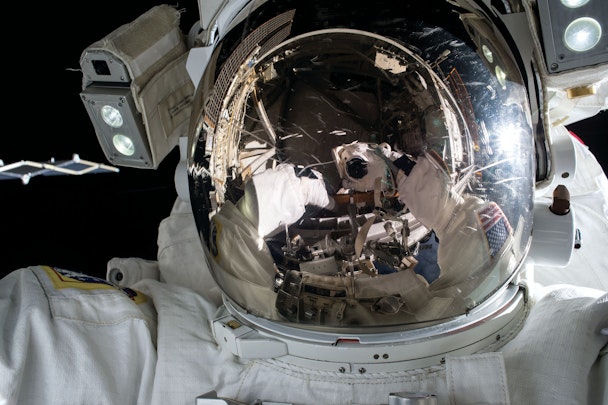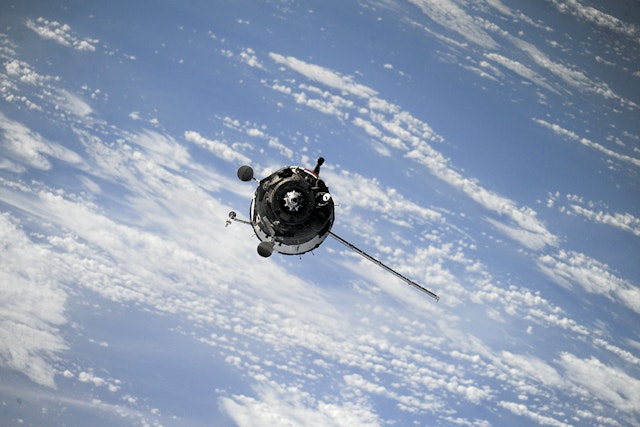
Advertisement

Stars of social
If any organization epitomizes mankind’s thirst for knowledge it is Nasa, whose social media team is kept similarly busy trying to reach new audiences. As we approach the 50th anniversary of the moon landing, The Drum looks at how the agency is owning the social media space.
Nasa’s social media operations encompass more than 537 accounts, producing a constant stream of compelling content detailing the tremendously diverse workload carried out by the agency.
It’s a major operation, but just the latest chapter in the brand’s ongoing mission to ‘expand human knowledge of phenomena in the atmosphere and space’ – something it has been legally required to do since the National Aeronautics and Space Act of 1958.
But whereas we once had famous footage of launches and moon landings as our must-see TV events, now we have live streams of Earth from the International Space Station, 360-degree videos of launches, and continuous peerless space photography documenting the distant corners of the galaxy.
It can be hard at times to get your head around the fact that just three people are responsible for all this.
Two of them – social media manager John Yembrick and deputy social media manager Jason Townsend speak with The Drum, having just come from the Oval Office where they coordinated a live interstellar chat between record-breaking astronaut Peggy Whitson and president Donald Trump. Whitson has just spent the most cumulative days in space for a US astronaut, having already claimed the most spacewalks by a female. She was also the first woman to command the International Space Station.
For Yembrick and Townsend it’s just another hectic day at the space-faring government agency.
“We’re looking at the best ways to connect with people, so as to reach the widest audience possible,” says Townsend, explaining how the brand continues to contribute to the zeitgeist. “We really do think our audience is all of humanity, so we try to use our presence to find something everyone can latch on to.”

Before social media, Nasa was dependent on media companies deciding which of its events were worthy of coverage. Now, as Yembrick puts it, the group “can seed powerful content images and stories into people’s feeds”.
From raw data and field footage, the social team must create a product consumable for a general audience. Townsend says that listening to its audience over the past few years has helped inform the brand how to communicate. “Know who your consumer is and how they are talking about you, rather than how you’re talking about yourself internally.”
Each post is tailored to a specific platform – beautiful images are published to Instagram (46 million followers), while Facebook (21m ‘likes’) and Twitter (32 million followers) are more focused on the moment, publicizing events, milestones and interesting snippets of information to a wider audience. But it goes deeper. Stories, both of the Instagram and Snapchat flavor, provide a behind-the-scenes look at proceedings.
As a government agency, however, Nasa’s inarguable reputation for innovation must go on hold in the social media realm – it is restricted from jumping straight into new platforms as they emerge, as Yembrick explains: “You have to ensure privacy and legal concerns are taken care of, so we carefully review and analyze platforms.
“We want to be telling stories on the platforms that people are getting their news from. For example, it took us a long time to get on Snapchat. We wish we had been on sooner but we had a few hurdles to get over. There’s an audience there, mostly a younger demographic, so we are repackaging our content in ways we’ve never done before to try to reach that audience.”

While denied the social media budget of many brands, Nasa boasts some of the most compulsive content to grace the web – a boon the team is using to grow an audience interested in science, technology and space travel. But it is video that will fuel further expansion, says Yembrick.
“We have a digital team and a TV station that is a repository for things we pull off our satellite. But now we are trying to create more and more compelling videos – short-form content that would run well on social media. Video is our priority when it comes to storytelling.
“We can tell a comprehensive story using videos from space. We do a lot of interviews and live events, and from the numbers we’ve seen that is how people are mostly consuming our content.”
Video, says Townsend, also helps highlight the people behind the “brain trust” that is Nasa. “One of the best ways for us to show off their expertise is to get them on video to talk about what they are studying, researching and discovering.”
If there’s a restriction on platform, then the potential for experimentation on the video front seems vast. A live 360-degree video in coordination with United Launch Alliance (ULA) and Orbital ATK aired on YouTube in April. Similarly, viewers can tune into the International Space Station at any time to look back at the majesty of our pale blue dot.
“We need to package space in a way that is cool and engaging,” says Yembrick, who adds that Nasa is looking at ultra-high-definition video and VR as two ways of doing this.
Also in its armory are its astronauts, Nasa’s out-of-this-Earth influencers – a corps of enthusiastic Peggy Whitsons who reach out to fans with nuanced and inspiring personal tales from space. This venture is not as closely managed as a skeptic would think, and the astronauts post from space on a voluntary basis, but they have a timeline in which to do it from orbit, says Yembrick.
“When you see someone like Jack Fisher, who has just launched to the International Space Station, that’s his voice, his words he’s sharing. There are people on the ground to help him if he chooses.”
Messages can be sent directly by astronauts (via a reportedly sometimes laggy internet connection on the International Space Station), or they can beam their words and images down to the team on the ground. As Yembrick says, “there’s no standard. It’s a personal thing people do to share their orbital experience. Most astronauts really want to share that experience and connect with the ground.”
It is fast paced at Nasa, he reflects. “We’re real people, doing this in real-time. We don’t always have time to sit around or brainstorm the best ways to do things.”
Considering most social media managers on this planet only have to concern themselves with operating within the Earth’s atmosphere, we can probably all agree they’re doing a pretty good job.
This piece originally ran in The Drum magazine's 'Human Race: the future of marketing' issue, which you can purchase here. You can subscribe to future issues of The Drum magazine here.